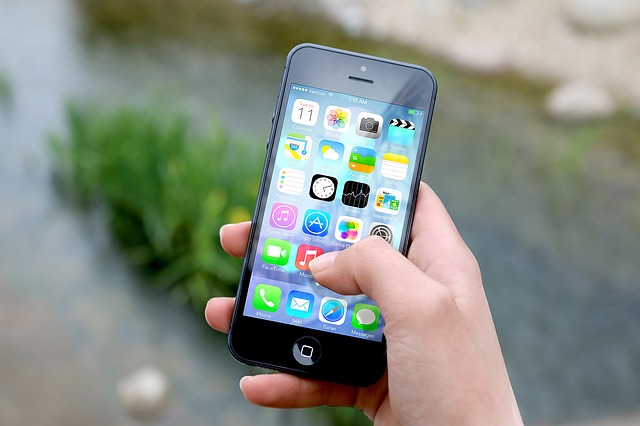
The app store is now flooded with branded apps that few people use. This overcrowding of overt promotions has lead industry leaders to claim that branded apps are dead. There is even a Tumblr out there, Crap Brapps, dedicated to showcasing bad and often hilarious examples of how brand have screwed up. Trust me, this is a list that you don’t want to get on.
I still believe that a company can use mobile marketing successfully through apps if they can create more value for their customers. After all, isn’t that the tried and true principle of all marketing? Here, we examine three types of values propositions that branded apps can bring and how three brands exemplified these values.
Apps that enhance the product
Your consumers are more likely to spend time on their mobile devices than on their desktops. Developing a holistic cross-device mobile strategy is key to your product’s success. I want to highlight how a large brand has incorporated new technologies, Augmented Reality (AR), into their mobile marketing campaign to great success. Apps that have some sort of AR functionality often work in conjunction with the physical product to make sure that the consumers can get the most of out what they purchased. As AR, Internet of Things (IoT), and other emerging technologies mature, we can expect a lot more growth in this space.
L’OREAL Makeup Genius
The innovative L’OREAL Makeup Genius app takes away the overwhelming choices in purchasing cosmetics. Using AR technology, L’OREAL Makeup Genius is the first app of this kind to let consumers try on makeup without the hassle of actually going to the store and physically trying products on. The in-app purchase option streamlines the sales process and takes the guesswork out of purchasing cosmetics. Because this app was first to market, the launch of the app picked up a lot of PR attention ranging from the New York Times, to Fast Company, to Vanity Fair, further driving the success of this mobile campaign. To date, over 10 million people have downloaded the app and tried on over 65 million different L’OREAL products. The scale at which L’OREAL increased people trying their products would have been impossible without a mobile strategy.
Apps that entertain the users
Most people look to mobile for entertainment and many established social media platforms are trying to be the all-in-one entertainment centres. We can see this trend through Instagram developing Snapchat capabilities through Instagram Stories. There is a growing market for apps that can up the entertainment value for consumers and can capture existing users of behemoth social media channels.
KevMoji
Kevin Hart is one of the most successful comedians in the past few years and is striving to create his own entertainment empire through HartBeat Production which created the KevMoji App. As a comedian, Kevin Hart’s is known for his expressive face. This app lets users send stickers of his face in lieu of standard emojis and stickers on iMessage and Facebook Messenger and fans are thrilled. On the first day of its launch, the KevMoji app topped the Apple paid app chart. Whilst this app is not the first celebrity face app, it’s hugely successful because it’s entertaining, larger than life, and ties in with Hart’s own brand.
Source: iTunes
Apps that are useful on a daily basis
Getting people to download your branded app is only half of the battle. The true measure of mobile marketing success is how frequently your users engage with the app and ultimately, how the app converts. Naturally, when thinking about what type of value your app can bring, you can tap into people’s basic needs. If you look back at your Psych 101 class, you may remember that at the very bottom of Maslow’s hierarchy of needs is Physiological Needs, needs that consumers have on a daily basis. Of course, this level of needs is not appropriate for every type of products and services, but tapping into this level will help embed your brand into your user’s daily routine – that’s an invaluable place to position yourself.
Nike Run Club
Nike has traditionally been a leader in sports marketing and many believe that the brand really popularized jogging as a fitness activity with its campaigns in the 1970s and 80s. Nike does not sell its products, rather it promotes the benefits of its products. The Nike+ Run Club app is a useful tool for runners to track their progress, map their route, and push themselves through Powersongs. The personalized training programs and social sharing options also motivate people to engage with the app regularly. Nike’s move into mobile apps ties in with its offline marketing activities where people can find and join a physical Nike Running Club in their area. Nike’s 33.5 billion dollars in revenue in 2016 was the highest on record for the company and a testament to its success.
Source: Nike
Just get started
Full disclosure, I am borrowing my call to action from Nike’s playbook. Mobile is a crucial space to market your products or services. Regardless of the size of your company or marketing budget, you need to think about how to leverage mobile marketing to grow your business. With more and more tools out there to simplify the app creation process, the hard part now is to make sure that you have an idea that creates value for your customers. The three value propositions listed here can help to guide you to developing an app that your customers actually care about and will use. Take this mobile marketing opportunity to convert your existing customers to become champions of your brand.
When you don’t have a large budget, the key to finding the right app-to-market fit is to do your research and rapidly prototype. Use existing app making tools to quickly test out your ideas without spending a lot of money. If you need any more inspiration, check out the Crap Brapps Tumblr list for what not to do.

